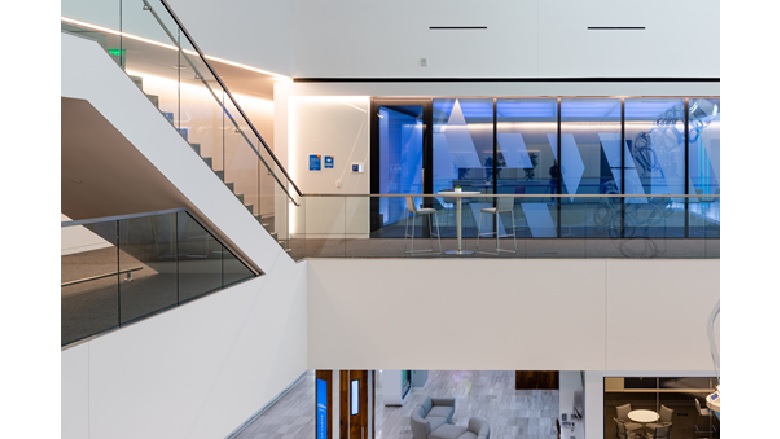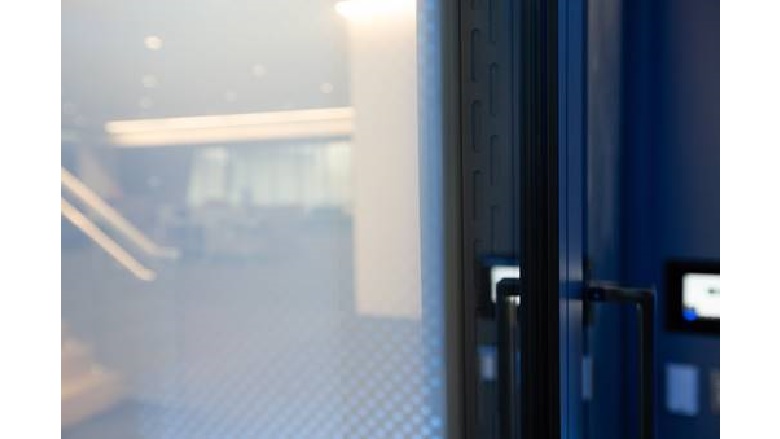In the simplest definition, smart glass technologies alter the amount of light transmitted through typically transparent materials, allowing these materials to appear transparent, translucent or opaque with a push of a button or the wave of a hand. Smart glass is dynamic, allowing a traditionally static material to become alive and multi-functional. This technology allows for the control of various forms of light, including visible light, ultraviolet and infrared.
Currently, smart glass is increasingly recognized worldwide for its ability to provide instant privacy, impressive energy-saving benefits and a modern, sleek appearance. In addition to being used for novel purposes, such as public toilets and gym pods, and the more traditional purposes, such as partitions, windows and doors for privacy, there are still many uses yet to be discovered.
In this article, we explore the use of smart glass in home appliances and how the technology can instantly turn a range of appliances from static to multi-functional and dynamic, offering users a range of additional features and benefits. The possibilities are endless, along with the promise to save money and help companies and homeowners reduce their carbon footprint.
Below are a couple of ways OEMs are utilizing smart glass to make home life smarter:
Smart Glass Refrigerators
Smart kitchens, featuring smart large and small appliances and lighting, are designed to save time and energy while being more efficient and sustainable. They let you control the function of an appliance with your smartphone or tablet by voice command or screen tap. The kitchen is already one of the most technologically advanced rooms in your home, and it just keeps getting smarter. Enter smart glass.
One ingenious way to use smart glass in a kitchen is in one of its most central appliances – a refrigerator. You may have seen fridges with built-in LCD screens or displays with the weather or family photos that can turn clear in a select area to create a viewing window.
The Institute of Food and Agricultural Sciences at the University of Florida says that being careless with opening and closing your fridge door wastes 50 to 120 kilowatt-hours a year. What if you had an entire smart glass refrigerator door, which could switch from sleek solid glass or instantly turn transparent with a simple command, such as a tap, allowing the user to not even have to open the door to see what’s inside? Think of how much energy that would save.
This inventive smart glass fridge application also has the possibility to hide disorganized shelves from view and be customized further with color and patterning, modifying the appearance for brand or customer preference.
Fridges equipped with smart glass can easily integrate into smart home automation systems, making them a high-tech upgrade for smart kitchens. Smart glass functionality is controlled in the same way as other smart home appliances (lights, speakers, etc.), which are connected to Wi-Fi and are controlled with touch, apps or motion sensors for an enhanced experience.

Photo courtesy of Gauzy
Smart Glass Displays & Televisions
The trend to incorporate smart glass into the serial display and television production and the latest ultra-modern product design for consumers is just getting started. OEMs of televisions and displays have endless potential to utilize smart glass paired with projection or OLED (and T-OLED) to advance the market forward and offer unique competitive advantages to boost sales and increase customer loyalty and retention. Additionally, there are options to use smart glass and projectors to turn smart glass into a display surface.
Some of the benefits of embedding smart glass into displays and television screens include turning the screen itself into a semi-transparent information display to view weather reports, calendar events, Alexa reminders and notifications, and so much more, while allowing the user to still see through the screen to the other side when desired. This would be a great design solution for displays that are placed in the middle of the living room, so they don’t block the view and ensure a sense of openness and spaciousness is maintained.
Another option for OEMs to consider is how to incorporate smart glass and projectors to create displays. Smart Glass projection film is a clear window tint-like material that makes it possible to convert standard glass used in office partitions, storefronts and even sliding doors into a high-quality projection screen within a matter of seconds. It has gained popularity in the last decade, becoming a preferred medium for attracting attention and drawing consumer awareness to brands, products and services for companies worldwide. Luxury residences are also incorporating smart glass projection technology into large scale cinema and lounge rooms. It’s a great choice for projecting on glass in malls and in-store displays. An added benefit is that glass treated with projection film can also double as a privacy partition.
Also, much like smart refrigerators, smart glass displays integrate into home automation systems and can be controlled however the user prefers: apps, motion sensors, touch panels and more.

Photo courtesy of Gauzy
The Future is Bright
The possibilities of smart glass home appliances and smart glass electronics are endless. Any home appliance that features glass can be that much more energy-saving, efficient and convenient. Just imagine what smart glass can do for alarm clocks, microwaves or an oven, a washer or dryer, or even a picture frame or a lamp. All OEMs of home appliances that contain some element of regular glass have an opportunity to work with smart glass technology to bring their innovative new products to life. Some smart glass providers, like Gauzy, have enabled the creation of smart glass for use in the automotive industry for cars, trains, buses and more, as well as in the architecture and interior design space for both commercial and residential developments. The applications of smart glass are as unlimited as one’s imagination.






Report Abusive Comment